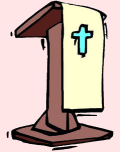Healing from a Mortal Wound

Here is the 3rd Lenten reading, centred around the Tau Cross, kindly passed to us by Rev. David Linde *
As we continue our Lenten season reflections on some symbolic representations of the cross, we have before us today the Tau cross because it closely resembles the Greek letter tau, similar to our letter t. It is also known as St. Anthony's cross.
One of the simplest of all the symbolic crosses, the Tau cross was also a simple cross actually used for crucifixions in the ancient world. In Roman times criminals condemned to crucifixion often carried the horizontal crosspiece to the site of their execution. There the crosspiece was attached to the top of the upright stake. It was likely this crosspiece that Jesus carried on the way to his Crucifixion, though the form of his cross may have been what we know traditionally as the Latin cross, since the charge against him ("king of the Jews") was displayed above his head.
Although as an ancient symbol the Tau cross was sometimes used in pagan culture and religion, in the history of the Christian Church it came to represent a variety of biblical truths centred on Christ. Among those is a connection to the Old Testament. In fact, the Tau cross is sometime called the Old Testament cross. One of the connections between this cross and the Old Testament is the incident of the snakes in the desert, found in the Old Testament book of Numbers (21:4-9). The Israelites were persistently refusing to believe God's goodness and his promises, and were grumbling against him. As a punishment God sent poisonous snakes into the settlement. Many Israelites were bitten and died. In their distress the people confessed their sin, and God instructed Moses to make a bronze snake on a pole. Anyone stricken by the snakebite who simply looked at that bronze snake on the pole would be healed.
Jesus referred to this incident in his conversation with Nicodemus. He said, "Just as Moses lifted up the snake in the desert, so the Son of Man" (by which Jesus meant himself) "must be lifted up, that everyone who believes in him may have eternal life" (John 3:14,15 NIV). When Jesus used the words "lifted up," he was speaking of his death to come: he would be lifted up on a cross. In the same way that the ancient Israelites were guilty of sin and could be healed with but a look to the snake on the pole, so today men and women and boys and girls who are stricken with the deadly effects of sin (and that's all of us, no exceptions) can be forgiven and restored to God with but a simple look to Jesus on the cross. This is the look of faith. It says, "I am slowly but certainly dying because of my sin, and it's my fault. I look to you, the Saviour whom God sent, to heal me. You are my only hope, but a sure hope."
What Jesus connected theologically - healing from sin by looking toward a pole - Christian tradition has connected symbolically, thinking of the pole that Moses made as being in the shape of a Tau cross. What happened in the desert was a picture of an even greater crisis for an even greater population: the whole world has been mortally stricken with sin. But an even greater pole of healing has been lifted up: the cross of Jesus Christ. Have you felt the death coursing through your veins? Have you looked in faith to your only hope, Jesus Christ?
Let us pray:
Heavenly Father, we are humbled by the incident of the snakes in the desert. We see in our own hearts the same unbelief and grumbling against you. We thank you for your mercy in the midst of your punishment - for the bronze snake on that ancient pole. And we thank you for that other greater pole that was to come, the cross of your Son, Jesus Christ. For his deep and thorough healing for all who look to him we praise you. Your cross is our sure hope.
Amen.

